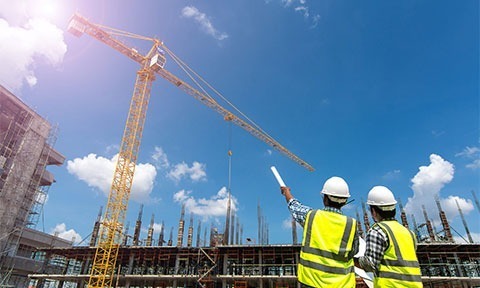Seismic Analysis of Structures With SeismoBuild and SeismoStruct Software
- Online course on seismic assessment and retrofit for various structures.
- Learn basics of static and dynamic nonlinear analysis in 4 lectures.
- Introduces software packages SeismoBuild and SeismoStruct.
- Gain knowledge of technologies for structural assessment under seismic loading.
- Intended for Engineers, Operations’ Managers, Applied Scientists, and Technologists.
Overview
Online Seismic Structure Training provides a theoretical framework for understanding seismic assessment and retrofit for various structures. The course consists of 4 lectures covering static and dynamic nonlinear analysis, introducing software packages SeismoBuild and SeismoStruct. Attendees will gain knowledge of technologies for structural assessment under seismic loading. Engineers, Operations’ Managers, Applied Scientists, and Technologists involved in design, assessment, and management of engineering structures will benefit from this course. The lectures are delivered by Dr. Stelios Antoniou and Dr. Fanis Moschas, experts in earthquake engineering and structural health monitoring.
Who should attend
Engineers, Managers, Scientists, Technologists
Course Content
About The Course
This course provides a theoretical framework for understanding seismic assessment and retrofit for various structures. It will be delivered as a series of 4 lectures of 1.5-hour sessions over 1 day where you will learn the basics of static and dynamic nonlinear analysis.
Two software packages, SeismoBuild and SeismoStruct, which are dedicated to structural assessment and strengthening will be introduced.
On completion of the course, you will be able to apply a sound knowledge of various technologies for structural assessment under seismic loading.
Who Should Attend?
The course is intended for Engineers, Operations’ Managers, Applied Scientists and Technologists interested in design & structure under seismic loading. Engineers, Managers and Scientists involved in design, assessment and management of a wide range of engineering structures will also benefit from this course.
PROGRAMME (All timings are in BST(GMT+1))
Day 1:
09.00 – 10.30 Lecture 1 Nonlinear Structural Analysis (part 1)
i. Methods of structural analysis (linear and nonlinear)
ii. The role of nonlinear analysis in structural analysis
a. Practical applications of nonlinear analysis
b. Problems associated with nonlinear analysis
iii. Nonlinear modelling strategies –
Sources of nonlinearity
a.Material inelasticity b.Concentrated plasticity elements
c. Distributed plasticity elements –
Fibre modelling d.Geometric nonlinearity
iv. Solving nonlinear problems in structural analysis
v. Numerical instability, divergence and iteration prediction
vi. How reliable are the predictions from nonlinear analysis methods?
Dr Stelios Antoniou
10.30 –10..45 Break
10.45 – 12.15 Lecture 2: Nonlinear Structural
Analysis (part 2)
i. Structural modelling in nonlinear analysis
ii. Nonlinear Static Procedure, NSP (Pushover analysis)
iii. Nonlinear Dynamic Procedure, NDP (Dynamic time-history analysis)
iv. Checks and acceptance criteria
Dr Stelios Antoniou
12.15 – 13.30 Break
13.30 – 15.00 Lecture 3: Introduction to SeismoBuild
i. Main features of the program
ii. Modelling and assessment of a 2- storey RC building
iii. Checks
iv. Creation of the technical report and the CAD drawings
v. Advanced Issues in the use of SeismoBuild
vi. Strengthening of an RC building with SeismoBuild
Dr Fanis Moschas
15.00 – 15.30 Break
15.30 – 17.00 Lecture 4: Introduction to SeismoStruct
i. Main features and basic modules of the program
ii. Assessment of a 2-storey RC Building with SeismoStruct’s Building Modeller
iii. Creation of a simple model with a step-by-step approach
iv. Advanced Issues in the use of SeismoStruct
v. Convergence Difficulties
vi. Creation and use of artificial accelerograms
Dr Fanis Moschas
ABOUT THE LECTURERS:
Dr Stelios Antoniou
Stelios Antoniou is a co-founder and the CEO of SEISMOSOFT ltd. (www.seismosoft.com), a company that specializes in the development of state-of-the- art tools for the non-linear analysis, the assessment and strengthening of structures, and the processing of strong-motion data. Simultaneously, he is the Head of the Seismic Repair and Strengthening Section of ALFAKAT S.A. (www.alfakat.gr), a company with significant experience in the design and construction of private and public works, with particular emphasis on strengthening and retrofitting projects against seismic loads.
He is a graduate from the Civil Engineering Department of the National Technical University of Athens (N.T.U.A.), and holds a PhD in Earthquake Engineering from Imperial College, London. He has several publications in scientific journals, European and World Conferences on various subjects related to Earthquake Engineering (Google Scholar h-index 16).
Dr Fanis Moschas
Fanis Moschas is a senior-developer at SEISMOSOFT ltd. (www.seismosoft.com). He is a graduate from the Department of Civil Engineering of the University of Patras, Greece, and holds a PhD in the area of Geomatics for Structural Health Monitoring from the same Institute. He has several publications in scientific journals and international conferences in
the areas of Structural Health Monitoring, GPS Applications and Geophysics (Google Scholar h-index 14).
Duration: 1 Day
Cost:£395



